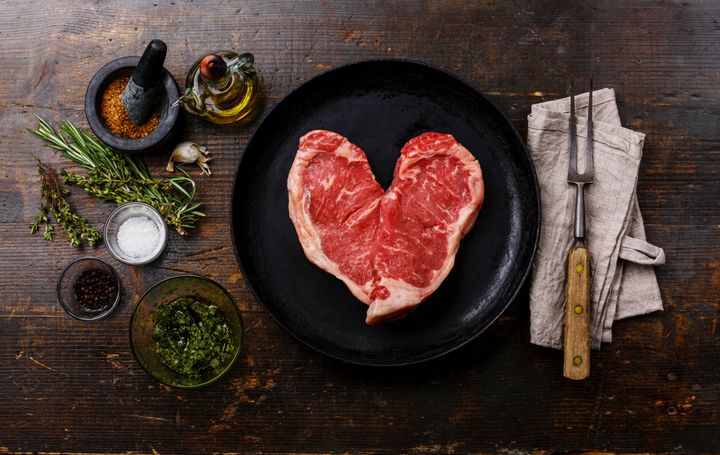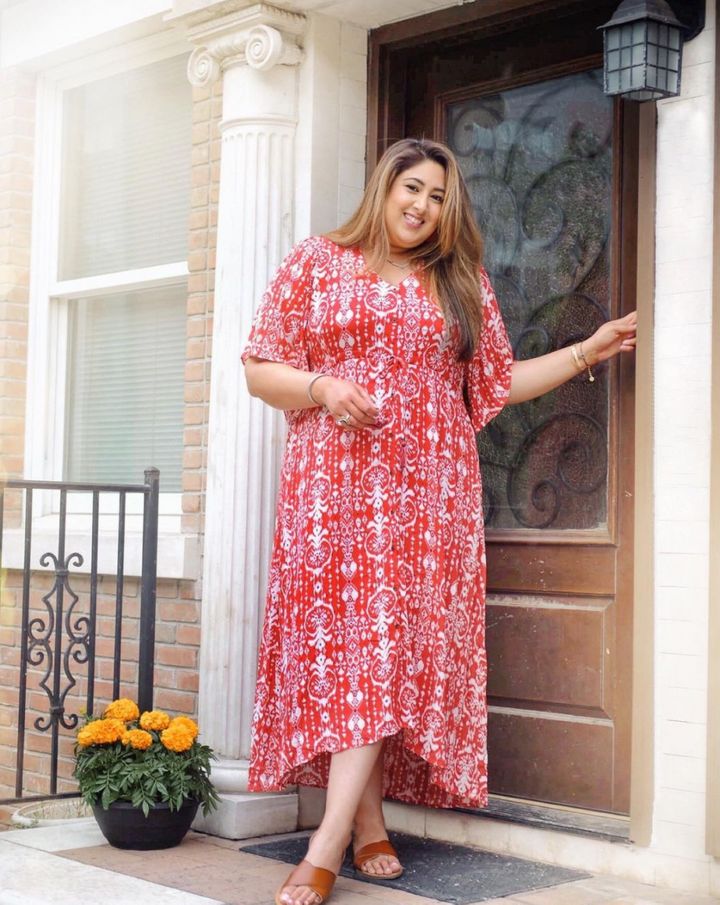The candles are glowing softly, and you’re holding hands with your sweetheart across the table. As the waiter strides over to take your order, you may feel like everything’s coming up roses for your relationship.
But beware.
Advertisement
While dinner for two at a romantic restaurant may seem like the best possible way to celebrate Valentine’s Day, professional chefs say there are dangers awaiting the unsuspecting diner ― ones that could upend what’s supposed to be the most amorous night of the year.
Here’s what to avoid if you want the night to turn out right.
Mistake #1: Eating dinner before … well, you know
As with so many aspects of romantic relationships, timing your Valentine’s Day dinner is everything.
Advertisement
“I’ve had my share of unromantic Valentine’s Days, and I realized a few years ago that this is directly attributable to me loving food,” Christine Pittman, founder of CookTheStory and The Cookful, told HuffPost. “After having a multi-course dinner, wine and an indulgent chocolate dessert, the night never ended with the kind of romance in the bedroom that I was hoping for. We’d get home and find ourselves too full of rich food, a tad tipsy and very much aware that we have to be up for work in the morning.”
Now, older and wiser, Pittman has learned to rearrange the evening’s agenda for maximum fun.
“Now we enjoy the ‘romance’ part of the evening before going out to dinner,” Pittman said. “The best part is that unbuttoning your pants at the end of the night is just to make yourself more comfortable. You can go in for a cuddle and a goodnight kiss with no pressure or guilt, knowing that you’ve already had a fully romantic Valentine’s Day.”
“Everything you hear about beans is true. Luckily, we both had a sense of humor and a pack of matches.”
– Chef Rossi
Mistake #2: Guzzling pink drinks
Advertisement
On a celebratory occasion, many diners think that the fancier or more colorful the drink, the better. But chef Renee Scharoff of Blonde on the Run Catering has observed folks lapping up overly sweet pink sparkling wine that’s billed as “Champagne” on the holiday. That, she said, is a recipe for a sugar headache or a hangover.
“One time, my team and I catered a Valentine’s Day dinner at which we were asked to serve only pink or red cocktails, replete with dry ice and heart-shaped garnishes,” Scharoff recalled. “I could tell most of the attendees just wanted a bourbon or a beer.”
Keep it simple and order what you’d usually like to drink for your romantic meal, not something that will make you feel awful later.
Mistake #3: Getting the prix fixe meal and eating every bite
Many restaurants offer a prix fixe dinner on Valentine’s Day. Since it’s one of the busiest dining-out nights of the year, it makes sense for chefs, because it allows them to order inventory accurately and produce dishes they know their kitchen can handle. But it’s not necessarily the best ordering option for a night devoted to love.
“People are just too tempted to eat everything that’s put in front of them during that multiple-course seating,” chef John Sugimura of Pinku Japanese Street Food said. “It’s a good idea to step away from the overconsumption of food and booze, at least this one night.”
Smart restaurants are picking up those cues to keep things light. “One year, I capped off our Valentine’s service with a decorate-your-own Valentine’s cookie activity, instead of serving a rich dessert,” Sugimura said. “It got people together, talking and having fun, and they could take the cookie home for later if they were too full.”

The Picture Pantry via Getty Images
Keep in mind that Valentine’s Day is not a holiday like Thanksgiving, when eating is the focus, or even Super Bowl Sunday, when the noshing never stops. Chef Michelle Bernstein, co-owner of Miami’s Café La Trova, said she’s noticed many V-Day diners who seem intent on getting their bellies full, without realizing that won’t necessarily keep their hearts light or their libidos purring.
“I’ve seen Valentine’s Day menus offering chateaubriand for two, three-pound lobsters dipped in butter, or, my personal favorite, a three-ounce piece of foie gras with something sweet underneath,” Bernstein recalled. “It’s all delicious and great food for sharing, but does anyone really feel ‘romantic’ after a meal like that? Why aren’t we eating a light salad, a lovely piece of fresh fish and a panna cotta instead?”
Mistake #4: Ordering for your date without asking first
Advertisement
It seems like something straight out of “Mad Men” ― the man (whose menu is the only one that includes prices) calls the waiter over and orders for himself and his date, without any prior consultation. And yes, it still happens, according to Chef Rossi, owner and executive chef of New-York based caterer The Raging Skillet.
“The sight of all that rare meat bleeding onto the sizzle plate, and her boyfriend sucking on the bones, induced a reaction far different from romance.”
– Chef Rossi
“I observed one couple get into hot water on Valentine’s Day, when ‘meat boy’ ordered a T-bone for two, rare,” Rossi recalled. “His lady love would have preferred a filet mignon cooked medium well, but he didn’t ask. The sight of all that rare meat bleeding onto the sizzle plate, and her boyfriend sucking on the bones, induced a reaction far different from romance and more like revulsion.”
For Rossi, a good Valentine’s Day meal begins with clear culinary communication. “My best advice is simply not to prepare anything for the object of your affection without a thorough list of dos and don’ts from them. And when you’re eating out, don’t order for them.”
Mistake #5: Ordering the sloppiest thing on the menu
You’ll want to end the meal looking as nice as you did when it started, so consider your order accordingly, chefs said. “Avoid spaghetti with red sauce, unless you’re into the splatter art of Jackson Pollock and OK with looking like a piece of his art by the end of the meal,” advised executive chef and managing partner Robin Selden, of Marcia Selden Catering.
And not all salads are created equally, so order with care, Selden said. “One Valentine’s Day, my husband took me to an elegant French restaurant with a special tasting menu. It started with a beautiful butter lettuce, frisée and endive salad, served with a creamy lemon vinaigrette and caviar. But the lettuce was so floppy and hard to navigate that by the end of the first course I was wearing the caviar that flew off the lettuce leaves.”
Mistake #6: Choosing ingredients that ruin romance
Curtis Stone, chef and owner of Maude and Gwen Butcher Shop and Restaurant in Los Angeles, said he’s a fan of all the traditional ingredients that make up a romantic dinner, including oysters, lobster, caviar and Champagne. But he suggested considering the effect that foods you love might have on your dining partner.
“Stay away from polarizing ingredients that literally leave a taste in your mouth, like garlic,” Stone advised. Stone and his wife, Lindsay, will be dining together this holiday at Maude in Beverly Hills, California, which he called his “dream little restaurant” — without garlic.
Timon Balloo is the chef and restaurateur at Ft. Lauderdale, Florida, restaurant The Katherine. He suggested that this is a good night to keep things mild — at least as far as your dinner is concerned.
Advertisement
“Stay away from the super-spicy foods,” Balloo said. “They might turn your evening into a bad case of heartburn or even a potential bathroom nightmare — and yeah, I said it, bathroom nightmare.”
Rossi brought up the bean issue, because somebody had to. “I committed my own major league Valentine’s Day boo-boo when I served a gorgeous black bean soup with sour cream garnish to my lady love,” she said. “Sure, it tasted fabulous. But honey, trust me, everything you hear about beans is true. Luckily, we both had a sense of humor and a pack of matches.”
Selden had two more no-no’s as a parting bit of advice: “Stay away from Brussels sprouts and cauliflower,” she said. “Trust me.”








